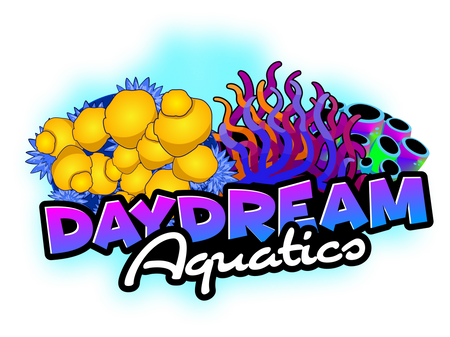
Live Rock Vs. Dry Rock
Live Rock Vs. Dry Rock

Let's take a deep dive into why rock is so important, what the major differences are, what types of rock are out there, and rock substitutes.
Why Is Rock So Important To Your Aquarium?

Rock is not only the foundation of your reef tank but the main source of filtration. What makes rock "live" are the beneficial bacteria (micro-fauna and micro-flora) that inhabit all the tiny cracks and crevices and process fish waste and uneaten food. These bacteria are vital to the nitrogen cycle which keeps ammonia from building up and causing harm to your reef. Circling back, rock is your infrastructure and your real estate to keep corals. Without a solid foundation your rocks can move and cause an avalanche of coral and rock, so make sure you start off solid and glue or epoxy those rocks together.
What Are The Differences Between Live Rock And Dry Rock?

Live rock is sourced from the ocean and is shipped wet to preserve the life on the rock.
- comes with beneficial bacteria, desirable algae, coral and sometimes cool little critters like snails, crabs and clams.
- Usually more expensive
- can introduce harmful hitchhikers into your reef tank such as flatworms, aiptasia, mojano, coral eating crabs or snails etc.
Live rock takes little to no cycle time since it comes with the beneficial bacteria needed to process the fish waste and uneaten food.
Dry rock is either man-made or dried and cured before it reaches your LFS.
- will not have any bacteria, algae etc.
- no pests whatsoever.
These rocks require a longer cycle period to start the growth of the beneficial bacteria. The upside is you know you are not putting anything harmful in your aquarium. Now, some reefers will sell old rock that has been left out to dry. These rocks can contain dried algae (sometimes will come back to life!), old fish waste and uneaten food, and require a little cleaning before popping them into the aquarium. A good power wash is suggested but some people take it a step further and give those rocks an acid bath to essentially "burn off" the top layer of rock and organic material.
Types Of Reef Rocks

There are a few types of rock at our disposal:
- Pukani, which comes from Fiji and is usually lightweight and very porous.
- Fiji, which has more of a flat surface and is usually more dense and heavy.
- Reef Saver, which is man-made and sustainable.
Reef Saver is our favorite because of its sustainability, keeping more rock/life in our oceans is always the priority. It seems to be easier to stack as well which is a huge plus because you end up with a more sturdy aquascape.
Rock Substitutes

Sometimes rocks don't fit into your plans (like a frag tank), or maybe you just want to add more rock without adding to your display. There are a few good options out there that will help boost your population of beneficial bacteria.
- Ceramic Filter Rings are most people's first media when starting a reef tank, they provide a little more surface area than not having them at all and do a good job at trapping fish waste and uneaten food. Most people discard these after a year or so because they are messy and collect a lot of detritus which in turn can cause nitrates and phosphates to rise.
- Bio Balls are a good media to add because they are designed to have a lot more surface area than ceramic filter rings. They are also easier to manage and don't get stuck in small areas of the sump or in the back filter section of an all-in-one tank.
- Marine Pure Balls or Blocks are the winners here because they have an insane amount of surface area which is more breeding grounds for the beneficial bacteria. The largest marine pure block (8in x 8in x 4in) has 23,000 sq ft of surface area and is equal to about 400lbs of live rock.
